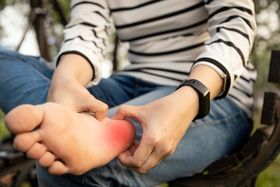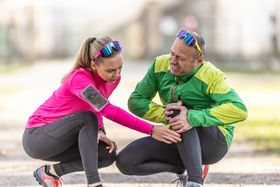How to Reduce the Risk and Symptoms of Blisters
Published October 19, 2021.

There's nothing more frustrating than getting blisters from a pair of new shoes - we all know the struggle. Blisters happen when force is placed on our skin. If it's a delicate area or there's repeated pressure, the chance of blistering increases.
Can You Become Resistant to Blisters?
According to a study from the Journal of Investigative Dermatology, there's a way to "train" your skin, making it more resistant to blisters. The study found that skin subject to repeated friction of a certain kind became more resistant to frictional forces. With thicker epidermis and larger cells, the skin actually adapted to the friction, creating a protective section that's less prone to blisters.
While this study focused on the skin of mouse ears (yes, you read right), additional research indicates that this is true for human skin, too. Studies conducted tests on the skin of thighs, back, buttocks, shins, forearms, upper arms, palms, and soles of feet.
What Causes Blisters?
To understand why thicker skin means less blistering, we need to first delve into the mechanism behind blistering. When pressure or friction is applied to the skin, the top layer (called stratum spinosum) tears away from the tissue below. The body immediately fills the space with fluid to protect the tissue and prevent further damage. Once the blister is formed, the body pushes amino acids and nucleosides to the area to create new, healthy skin above the torn tissue.
When the skin is thicker and denser, it spreads the load better on the skin's surface. That means a lower risk of mechanical fatigue (i.e., tearing), leading to a lower risk of blistering. However, note that creating skin that is too thick and calloused is not recommended. It may make it harder to treat blisters that do form.
How Can You Build Up a Resistance to Blisters?
Here are a few tips to help you do so:
- Break in new/stiff shoes or insoles by wearing them for a short time, then gradually increasing until you're entirely comfortable.
- Start doing new activities, like running or hiking, for a shorter amount of time - and increase that time as you go along.
- If you're noticing excessive friction in a specific location, use a bandaid to cushion the area. This way, you can gradually expose your skin to friction to encourage adaption.
- When you're not wearing your shoes, try and keep your feet dry to promote healing.









